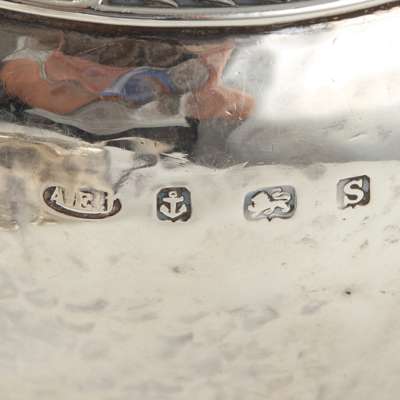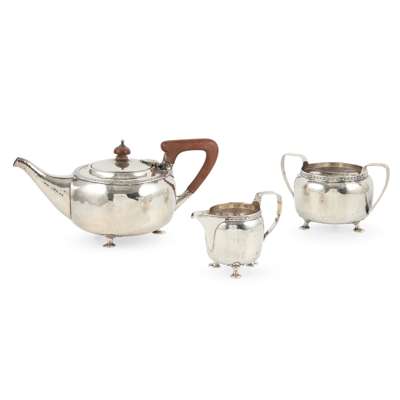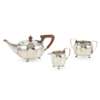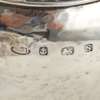
Lot 418

A. E. JONES (1878-1954)
THREE-PIECE TEA SERVICE, 1917






Auction: Day Two inc FL Griggs : A Cotswold Legacy | Lots 334 to 654 | Thursday 16th October from 10am
Description
silver, comprising a TEAPOT, with wooden handle and knop, 10.5cm high; a MILK JUG, 7.5cm high; and a TWIN-HANDLED SUGAR BOWL, 13cm across handles, each with stamped maker's mark A.E.J., hallmarked Birmingham 1917, 528g including handles (3)
Provenance
A. E. Jones and by family descent
Footnote
“A piece of silver-work, to be truly interesting, must be endowed with the spirit of Art; and to achieve that result, it must be made by a workman who has received an Art training.” – A. E. Jones, 1904
The city of Birmingham was a significant regional centre of the Arts and Crafts Movement, and Albert Edward Jones (1878–1954) was a prominent figure in the field of silverwork. From an early age, Jones resolved to become a silversmith. He was first apprenticed to Woodwards of Birmingham, later moving to Hardman Powell’s, the ecclesiastical silversmiths. His education continued with a period of study at the Central School of Arts and Crafts in Birmingham under Edward Taylor, after which he worked with the Birmingham Guild of Handicrafts.
In 1902, Jones established his own business in Windmill Street and subsequently acquired the firm of Jesson, Birkett & Co., at which point he began using the St Dunstan trademark. Although relatively small in scale, the company became a gathering place for other artists and designers, including Edward Taylor (head of the Birmingham School of Art and son of Ruskin Pottery’s owner Howson Taylor), Arthur Gaskin, and A. S. Dixon. Jones’ principal achievement was his ability to balance commercial production with the ideals of the Arts and Crafts Movement—craftsmanship, quality, and artistry.
Following his death in 1954, the firm continued under the leadership of his son, Kenneth Crisp Jones, and later with Caroline Lee as managing director.
The following lots are from the Jones family by descent.





